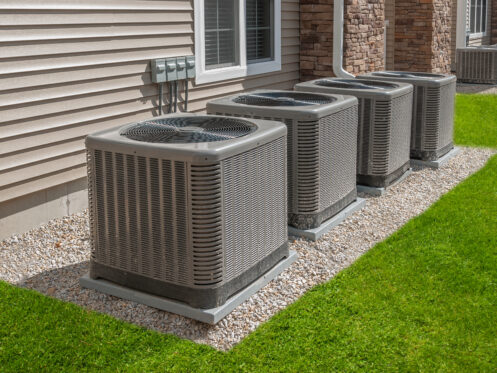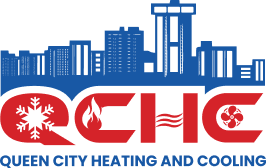Cooling systems are in constant use during the humid summers here in southwest Missouri. Most property owners look for air conditioners that keep their homes cool and comfortable without consuming too much energy. Choosing the right energy-efficient system for your house will help you save money on utility bills and reduce your environmental impact. Here are four factors to consider when selecting an energy-efficient air conditioner.
1. Energy Efficiency Rating
When purchasing an air conditioner, consider its Energy Efficiency Ratio (EER) and Seasonal Energy Efficiency Ratio (SEER) ratings. EER is the ratio of cooling output to the amount of power consumed. SEER is the ratio of an air conditioner’s cooling output over a typical cooling season divided by the energy it uses in watts per hour. This is measured over a season using constant indoor temperatures and varying outdoor temperatures between 60 and 100 degrees.
The higher the EER and SEER ratings, the less electricity an air conditioner uses to keep your home at the desired temperature. Choose an AC unit with an EER above 8.5 and a SEER above 13. Modern air conditioners have an energy guide label that shows how much energy the system uses per year and the amount that you’re likely to save. When buying a single-room AC unit, consider the EER rating, but if it’s a central air conditioner, you should look at the SEER rating instead.
2. Size of the System
Most property owners assume that a bigger system is better because it cools a space quickly. Others prefer a smaller unit because of the cost savings. However, these mistakes result in a system that uses more energy and fails to create the desired indoor comfort.
An air conditioner’s size is determined by its cooling abilities. If the AC unit is too big for the space you want to cool, it will run frequently, which is called “short cycling,” to achieve the set temperature. Since the system has a large capacity, it quickly meets the cooling load and turns off before the house is adequately cooled. After some time, it starts another cycle. The frequent cycles use more energy because the system consumes more power when starting.
Besides energy inefficiency, oversized systems can lead to high humidity levels. This happens because the unit turns off before the moisture completely condenses and falls on the condensate pan. When this happens, the moisture evaporates and is recirculated to the house.
An undersized air conditioner will operate at maximum capacity to reach the set temperature throughout the home. Because of its inability to blow cooled air to all rooms, it has longer cycles than it should and uses more energy. An undersized air conditioner can also dry the air excessively, so you may need to turn on a humidifier to correct the humidity levels.
An HVAC professional can help you determine the right-sized system for your home. This is based on your house’s square footage, its weatherization levels, the number of occupants, and the outdoor climate.
3. Energy Star Certification
Look for AC units with the Energy Star label, showing that they meet the energy efficiency guidelines set by the U.S. Environmental Protection Agency (EPA). Energy Star-certified air conditioners use 8% less energy on average when compared to standard models. The Energy Star label was established to reduce greenhouse gas emissions and pollutants that inefficient systems release. It also helps consumers identify an energy-efficient unit that can reduce utility bills without compromising indoor comfort.
4. Programmable Temperature Settings
A programmable thermostat allows you to set temperature schedules based on your daily routine and occupancy patterns. It will automatically adjust the temperature when you’re away or asleep. Consider setting the temperature a few degrees higher during unoccupied hours to maximize energy savings. The system should also have a power-saving mode, so it turns off the compressor and the fan when the house is cooled to the set temperature.
Even the most energy-efficient AC unit will fail to perform optimally when not installed correctly. Proper installation also involves adequate insulation, sealing ductwork to prevent air leaks, and optimizing airflow for even distribution of cooled air. Our licensed and experienced technicians at Queen City Heating & Cooling can efficiently install your air conditioner. Our team is also dedicated to heating and cooling system repair, maintenance, and replacement in all residential homes throughout Nixa, MO and the surrounding areas. Additionally, we provide emergency repair services. We’ll do any job right so that you can enjoy the perfect indoor air. Contact us today at Queen City Heating & Cooling to learn more.
Contact Queen City Heating & Cooling today!






